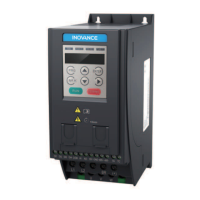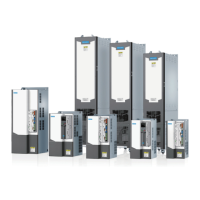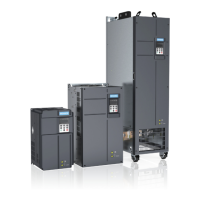Function Application
‑574‑
frequency is below the rated level. To improve motor running performance, lower the
overcurrent stall action current for situations when the frequency is above the rated
level. This helps to improve acceleration performance and prevent motor stall in high‑
frequency applications with large load inertia multiple field weakening requirements,
such as centrifuges.
When the frequency is above the rated level, overcurrent stall action current = (fn/fs) x
k x LimitCur
In the formula, fs is the running frequency, fn is the rated motor frequency, k is the
value of F3‑21 (compensation coefficient of speed multiplying overcurrent stall action
current), and LimitCur is the value of F3‑18 (overcurrent stall action current).
Figure 3‑42 Speed multiplying overcurrent stall action current
Note
For high‑power motors with carrier frequency below 2 kHz, lower the overcurrent stall ac‑
tion current. Otherwise, the pulse‑by‑pulse current limit function is enabled before the
overcurrent stall prevention function as ripple current increases, resulting in insufficient tor‑
que output.
3.4.3 Overvoltage Stall Suppression
When the bus voltage exceeds the overvoltage stall suppression action voltage (F3‑
22), the motor becomes regenerative (motor speed > output frequency). In this case,
overvoltage stall suppression is triggered to prevent overvoltage trips by adjusting the
output frequency to extend the deceleration time. If the actual deceleration time
cannot satisfy the requirement, increase the overexcitation gain as appropriate.

